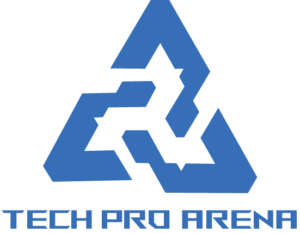
“The Galaxy Z Fold 7 is thinner, lighter and more visually appealing. The ultra-thin design — among the thinnest in the world — is so nice that you’ll want to forgive its shortcomings. It’s the best foldable for most people.”
- Stunning ultra-thin design
- Crease is almost imperceptible
- Great main and cover displays
- 200MP main camera is good
- All-day battery life
- Excellent software and multitasking
- 7 years of updates support
- Lighter than the Galaxy S25 Ultra
- No future cost for preloaded AI features
- Battery is not as good as rivals
- Camera is not as good as rivals
- Battery u0026 charging are below average
- Snapdragon processor is throttled
- No S Pen support on either display
- Expensive
Instant Insight
The Galaxy Z Fold 7 is the best folding phone for most people. It took Samsung longer than the competition, but it was worth the wait: the Galaxy Z Fold 7 offers the most comprehensive folding phone experience available in most markets.
Everyone I’ve shown the Galaxy Z Fold 7 to has had the same reaction: a guttural instinctive reaction of complete wonder. I’ve shown most of the best folding phones to my family and friends, but the Galaxy Z Fold 7 is the first book-style folding phone that has persuaded them to switch to a folding phone. The biggest surprise? My mother. She uses a Galaxy S22 Plus and thinks the Galaxy S25 Ultra is too big, but she’s enamored by the Galaxy Z Fold 7.
The Galaxy Z Fold 7 is the best folding phone for most people
Samsung achieved this thanks to one primary goal: to make a folding phone that’s no different from a non-folding phone when folded. In pursuit of this goal, the Galaxy Z Fold 7 delivers in abundance. Although it’s thicker than the S25 Ultra, it’s lighter and feels better in the hand. Both screens are larger, and the Cover Screen is no longer as narrow as it was in previous years. It makes for a phone that feels thinner and lighter in the hand.
The camera has been updated to feature the headline 200MP camera sensor used in the Galaxy S25 Ultra, but it uses the updated smaller sensor found in the Galaxy S25 Edge. This is paired with a 10MP telephoto lens with 3x optical zoom and the same 12MP ultra-wide sensor found in most Samsung phones.
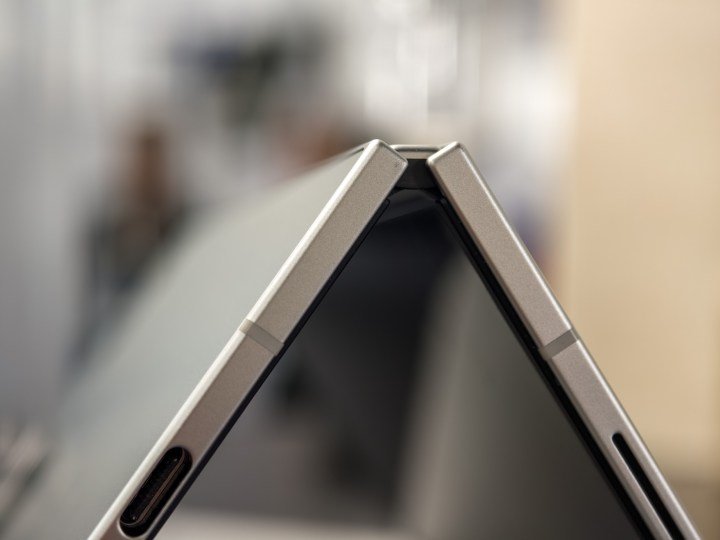
Yet, the Galaxy Z Fold 7 is not without its faults. The extra resolution on the main camera is a welcome improvement, but the overall camera system isn’t the best on a folding phone. The battery is the same as the Galaxy Z Fold 6 at 4,400 mAh; however, the maximum charging speed is considerably lower than that of most phones, and it rocks noticeably when placed on a table. The Snapdragon 8 Elite processor is the same one used in the best Android phones, but it’s throttled to prevent overheating.
Samsung has created the perfect feeling folding phone
Despite these flaws, the Galaxy Z Fold 7 is the folding phone that will most likely tempt people to make the switch to a foldable device for the first time. It’s not the thinnest folding phone in the world, but it feels better in the hand than the thinnest — the Honor Magic V5 — and is more comfortable to use one-handed than its other key competitor, the Oppo Find N5.
This is not an iterative upgrade; rather, it’s the evolution of the folding phone into a new era. This is the era of folding phones that feel like regular phones, and Samsung has created the perfect feeling folding phone in the Galaxy Z Fold 7. This alone makes this a phone that many people should consider; there’s nothing else like it.
Samsung Galaxy Z Fold 7 Specs
| Samsung Galaxy Z Fold 7 | |
| Dimensions & Weight | Unfolded: 158.4 x 143.2 x 4.2 mm Folded: 158.4 x 72.8 x 8.9 mm 215 g |
| Display | Main Display: 8-inch Foldable Dynamic LTPO AMOLED 2X 1968 x 2184 pixels, 368 ppi 120Hz, HDR10+, 2600 nits peak brightness Cover Screen: |
| Processor | Qualcomm Snapdragon 8 Elite for Galaxy |
| RAM & Storage | 12GB RAM / 256GB ROM 12GB RAM / 512GB ROM 16GB RAM / 1TB ROM |
| Cameras | Wide: 200MP, f/1.7, 0.6µm multi-directional PDAF, OIS Ultrawide: 12MP, f/2.2, 120° Telephoto: 10MP, f/2.4, 1.0µm |
| Battery | 4,400 mAh Lithium-Ion 25W wired charging 15W wireless charging 4.5W reverse wireless charging |
| Software | One UI 8, Android 16 |
| Price | From $1,999 |
| Colors | Blue Shadow, Silver Shadow, Jet Black Samsung.com exclusive: Mint |
The Galaxy Z Fold 7 Design is my favorite on a foldable
Quick take: If there was ever a perfect folding phone design, this is it. Hopefully, this is a sign of things to come.
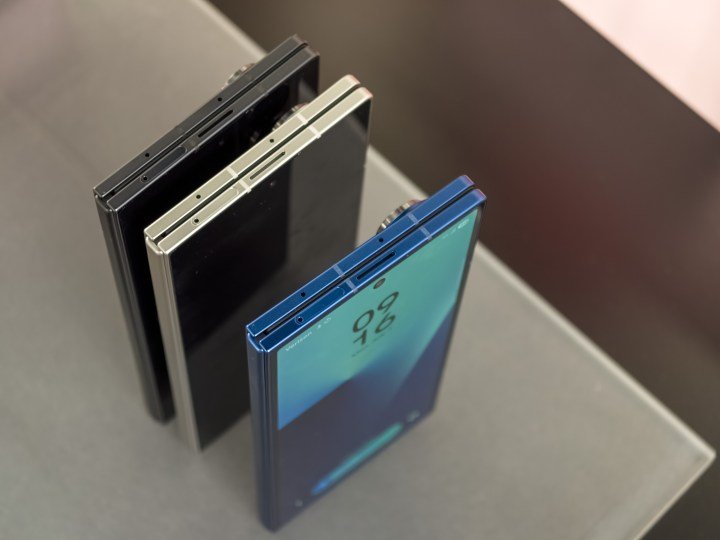
For the past few years, Samsung has resisted calls to revert from its folding phone design language. As rivals have become thinner, lighter, wider, and shorter, the Galaxy Z Fold range has largely remained the same. Yes, the Galaxy Z Fold 6 was thinner and lighter than its predecessors, but it was ultimately still several millimeters thicker than the competition.
The biggest challenge with this was the bulkiness of Samsung’s previous folding phones when folded, but the Galaxy Z Fold 7 addresses this issue. It’s taken Samsung longer than I would have liked, but the Galaxy Z Fold 7 design is worth the wait.
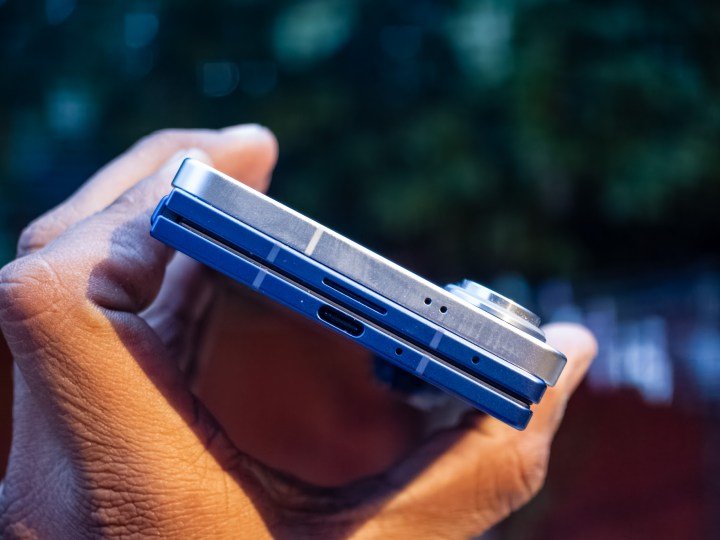
At 4.2mm thin when unfolded, it’s 0.1mm thicker than the Honor Magic V5, but that has a larger camera bump and doesn’t feel as ergonomically friendly as the Galaxy Z Fold 7. It’s a considerable improvement over the Galaxy Z Fold 6, which is 1.4mm thicker when unfolded, and a huge 12.1mm thick when folded. The super-slim profile and redesigned teardrop hinge result in the Galaxy Z Fold 7 measuring just 8.9mm thick when folded, or 26% thinner.
This makes it 0.7mm thicker than the S25 Ultra, but crucially, it’s three grams lighter than Samsung’s camera behemoth and 24 grams lighter than last year’s Fold. The device is also 4.8mm narrower, which makes the front screen more comfortable to use with one hand and makes the phone feel truly special. It’s one of the nicest regular phone experiences in a long while, and the narrower front screen is key to making this appeal to those who find big phones too wide to use with one hand. It’s so good, the dimensions of the Cover Screen would make for the perfect-sized regular smartphone.
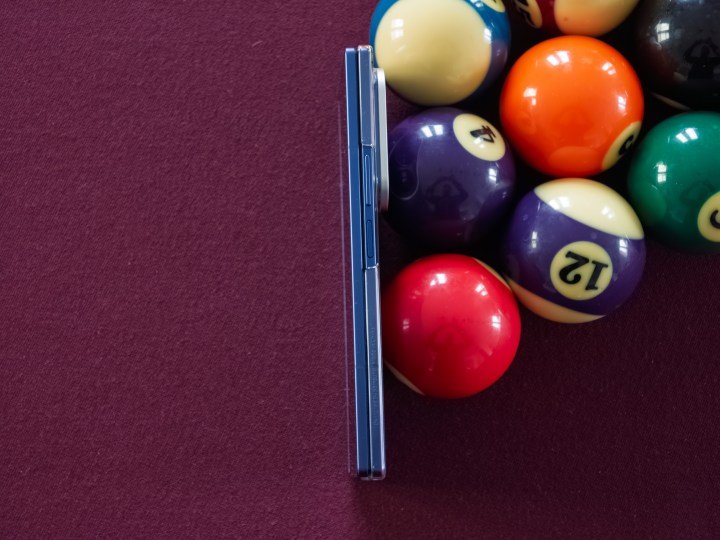
It’s no surprise that the Galaxy Z Fold 7 feels just like a Galaxy S25 Ultra, as this was Samsung’s primary goal. It’s telling that while showing it to more than 30 people over the past week, none were immediately able to identify that it unfolded. This was Samsung’s goal, and the result is simply magical.
Of course, being considerably thinner has its challenges, primarily in terms of durability; however, Samsung has made the necessary adjustments to achieve its goal. This involved switching to a teardrop hinge design, rather than the previously used U-shaped design. It also meant making the hinge thinner and using titanium and carbon fiber sheets to support the display.
One added benefit? The crease has been reduced, and it’s almost imperceptible. One key downside? Samsung removed the digitizer layer, meaning there’s no S Pen support.
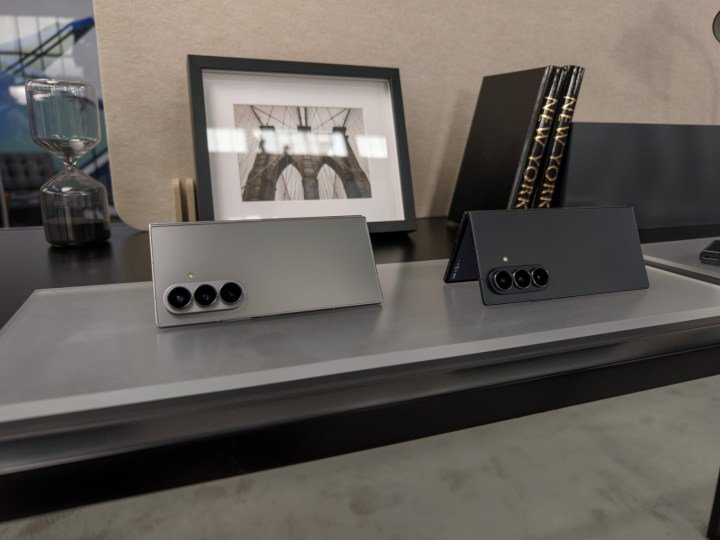
Like most folding phones, the power button and volume keys are located on the right side. The latter is fairly easy to press, and although they’re stiff, they should loosen with time. One of my concerns about a slimmer Fold 7 was phone calls, but unlike the Find N5, which was the world’s thinnest folding phone until a few weeks ago, the thin profile doesn’t affect phone calls on the Galaxy Z Fold 7.
There’s little I would change about this design, although perhaps the wobble caused by the camera bump when placed on its back on a table could be addressed. As I discovered with the Galaxy S25 Edge, an ultra-thin design and incredible feel in the hand are often enough to forgive other misgivings.
Score: 10/10
The Galaxy Z Fold 7 Display is bigger and better
Quick take: The two displays are bigger and better, inside and out
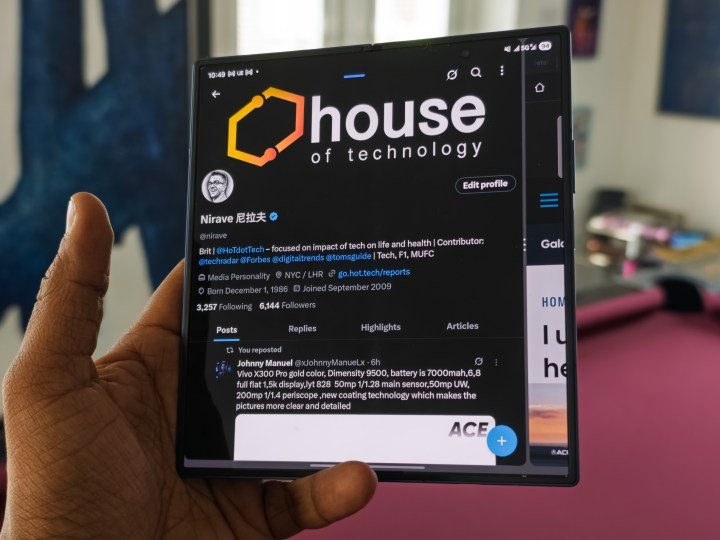
I generally love Samsung’s displays, but the Galaxy Z Fold 6 displays didn’t age well as phones like the OnePlus Open and Honor Magic V3 pushed the industry towards bigger displays on both the front and the back. Like the design, the displays on the Galaxy Z Fold 7 are finally bigger, but they’re also better, much better.
First, there’s the most noticeable improvement: the Cover Screen. It’s now slightly larger at 6.5 inches, but the Galaxy Z Fold 7 is also 4.7mm wider. These changes mean it’s wider than the Galaxy S25, but still narrower than the Galaxy S25 Ultra, making it more suitable for one-handed use.
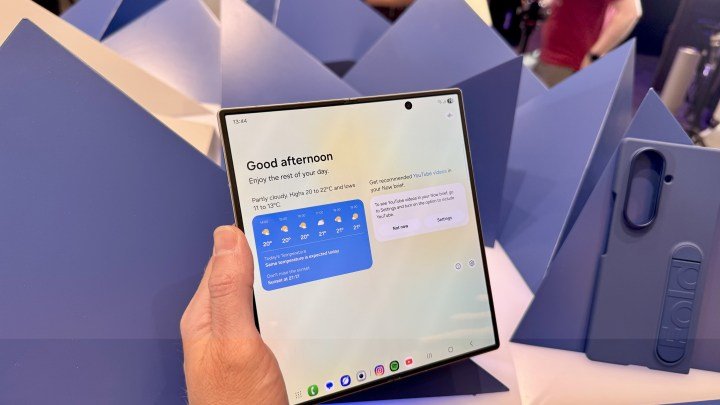
Size and aspect ratio aside, the rest of the Cover Screen is identical to that of the Galaxy Z Fold 6, including a peak brightness of 2,600 nits and a dynamic refresh rate of 1-120Hz. One notable change is the switch from Gorilla Glass Victus 2 to Gorilla Glass Ceramic 2 on the Galaxy Z Fold 7, and it remains uncertain whether it will offer the same level of scratch resistance as previous years.
Then there’s the main display, and this has also been considerably improved. It has increased in size from 7.6 inches to 8 inches, making it better suited for multitasking on the go. This matches the same size main display as the Pixel 9 Pro Fold, is larger than the Honor Magic V5 (7.95 inches), but smaller than the Find N5 (8.12 inches). It has a great overall size, and the same peak brightness as the cover display ensures it remains legible in direct sunlight.
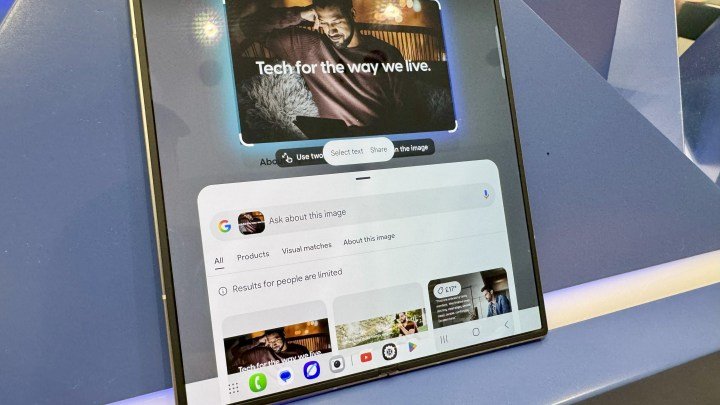
One added benefit to the new hinge design is its impact on the crease. Yes, the crease is still there, but the switch in hinge design means it’s far less pronounced and harder to see. It also means it’s virtually imperceptible when you run your finger over it, and this is the most impactful change year over year. If the crease has deterred you before, you should try the Galaxy Z Fold 7.
Score: 10/10
The Galaxy Z Fold 7 battery could be better (200-350)
Quick take: Battery optimization is great, but nothing beats the law of physics.
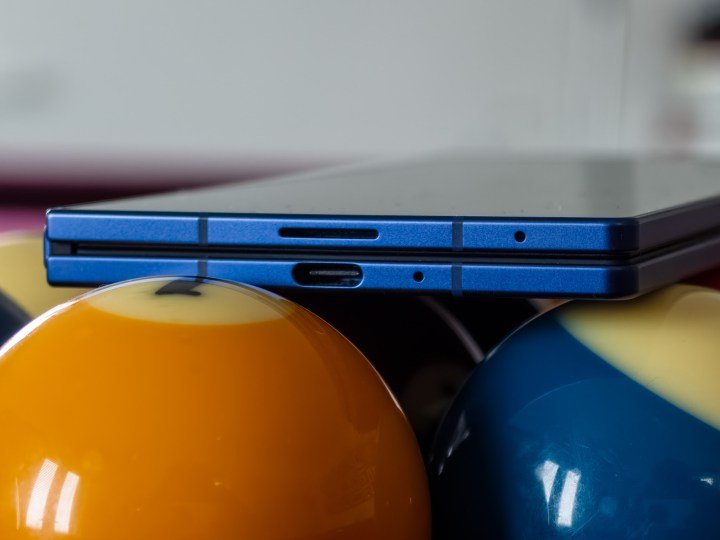
So far, the Galaxy Z Fold 7 experience has been positive, but the battery is where the experience requires a greater compromise. The battery capacity remains the same as last year at 4,400 mAh, which is a notable achievement considering the Galaxy S25 Edge is considerably smaller at 3,900 mAh. Still, it falls short of the competition’s larger capacities.
If you’ve used another book-style folding phone, you will likely be disappointed by the battery on the Galaxy Z Fold 7. It’s fairly inconsistent, and over the past week, it has always lasted a full day, but little beyond that. Screen time ranges from three to six hours, and the longevity varies considerably based on usage of the front screen vs the main display.
The battery life is just good enough, but it’s not the considerable step up that I was hoping for. Rival folding phones have considerably larger batteries and offer much better battery life. The Find N5 features a 5,600 mAh battery, while the Honor Magic V5 is even larger, ranging between 5,820 mAh and 6,100 mAh, depending on the region.
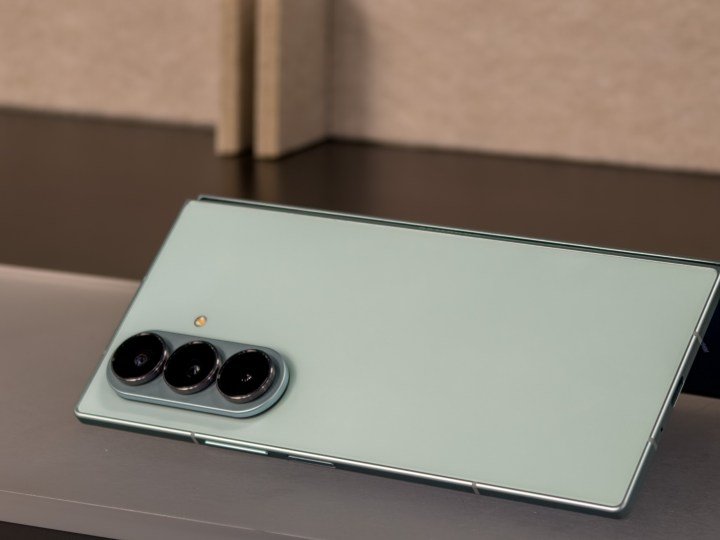
Key to those capacities despite the thin design is the use of next-generation Silicon Carbon technology, which allows for more dense batteries. Samsung deserves considerable praise for being able to use a sizeable Lithium-Ion battery despite the thin profile, but it still hasn’t made the switch. I can’t help but wonder how good the battery life would have been had Samsung made the switch to Silicon Carbon with the Galaxy Z Fold 7.
Then there’s charging, and this is another area I had hoped that Samsung would have improved. The Galaxy Z Fold 7 supports a maximum charging speed of 25W and charges to 80% in around an hour. To charge the remaining 20%, an additional 30 minutes are required. These are below average when considering that all its rivals charge faster. The Magic V5 supports 66W wired charging and 50W wireless charging, while the Find N5 has 80W wired and 50W wireless charging. We expect to see considerable improvements in the Pixel 10 Pro Fold next month.
Score: 7/10
Galaxy Z Fold 7 performance is solid but unspectacular
Quick take: Great performance (most of the time), but not quite as Elite as you might expect.
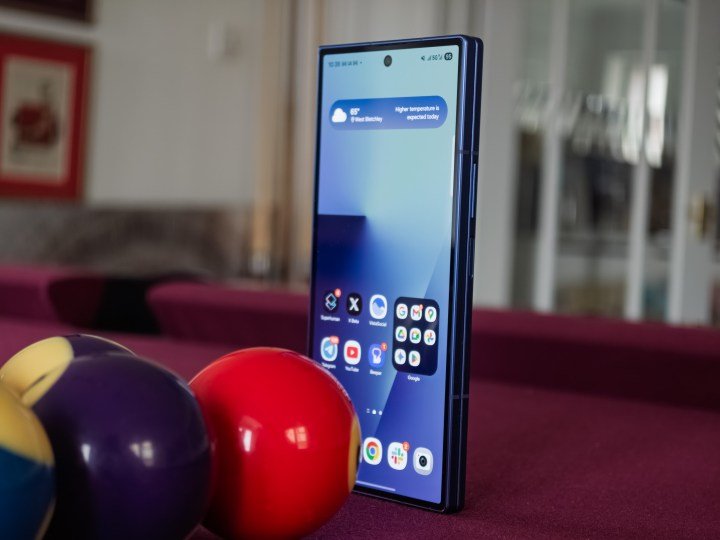
On paper, the Galaxy Z Fold 7 has the best processor, but in practice, the situation is far more nuanced. The Snapdragon 8 Elite for Galaxy processor is an overclocked and optimized version of the core Snapdragon 8 Elite processor, and devices like the Galaxy S25 Ultra are amongst the most performant.
Yet, this is for the 8-core version of the processor, and even there, there are nuances to be aware of. Yes, there is one more core than the 7-core processor found in the Oppo Find N5 — which was ostensibly launched specifically for ultra-thin devices — but performance is mostly similar between the two phones.
| Single-core CPU | Multi-core CPU | GPU | |
| Galaxy Z Fold 7 | 2650 | 8143 | 16245 |
| OPPO Find N5 | 2831 | 7912 | 13875 |
| Galaxy S25 Ultra | 2974 | 9475 | 17776 |
| Galaxy S25 Edge | 2425 | 8908 | 17590 |
This is also evident in the benchmarks, where the Galaxy S25 Ultra outperforms the Galaxy Z Fold 7 in every metric. In GeekBench 6, the Galaxy Z Fold 7 scores 2650 in the single-core test and 8143 in the multi-core test, while the Galaxy S25 Ultra scores 2974 and 9475, respectively. The less-powerful Find N5? It scores higher than the Galaxy Z Fold 7 at 2831 and 7912, respectively.
| Solar Bay Loop | Solar Bay Stress Test | Battery drain | |
| Galaxy Z Fold 7 | 8008 | 7883 | 7% |
| OPPO Find N5 | 9333 | 9156 | 9% |
| Galaxy S25 Ultra | 12119 | 10500 | 13% |
| Galaxy S25 Edge | 10252 | 11912 | 11% |
However, it appears that this throttling only affects the CPU, with GPU performance much closer to its most optimal sibling. In both 3DMark and Geekbench GPU scores, the GPU is significantly closer to that of the Galaxy S25 Ultra. One likely reason for the throttling is battery life. The 20-minute 3DMark stress test drained considerably less battery life on the Fold 7 (7%) than the average Snapdragon 8 Elite phone (13%), the Galaxy S25 Ultra (13%), or the average Snapdragon 8 Elite for Galaxy phone (10%).
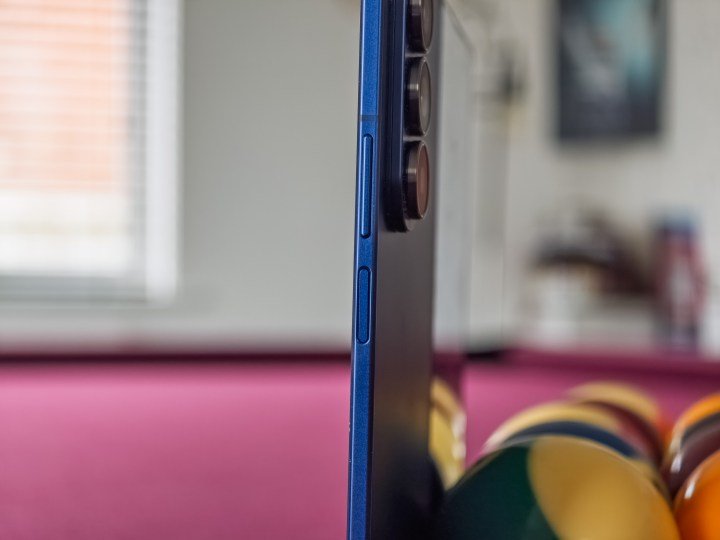
The fingerprint sensor is particularly challenging, but this could be due to the design and the thin body. A less recessed sensor, or even a raised button like the volume keys, would make all the difference. Instead, it takes some getting used to and is less useful than in previous years. Otherwise, the rest of the hardware has performed as expected.
For most people, the overall performance will be excellent. I’ve yet to experience any glitches or lag, even when running multiple app windows simultaneously. However, I’ve noticed slight stutters at times, which is somewhat noticeable compared to the best flagship phones. This is no different from the Galaxy S25 Edge, and is likely one of the compromises we have to accept in ultra-thin phones.
Score: 7/10
The Galaxy Z Fold 7 camera is above average, but not the best
Quick take: A big main camera upgrade, but still not the best foldable camera
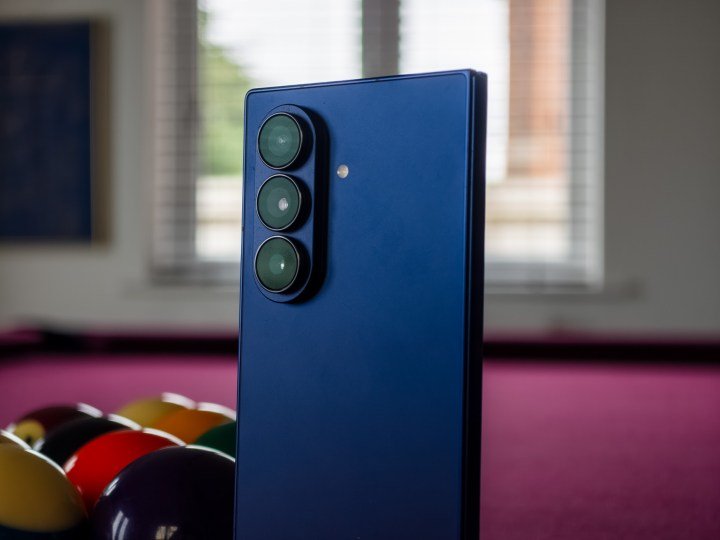
Alongside the battery and performance, the Galaxy Z Fold 7 also requires a certain compromise. It’s a considerable upgrade over the Galaxy Z Fold 6, but while the design and display improvements leap Samsung above its rivals, the camera upgrade still places them in the middle of the field.
The 200MP main camera is the same one found in the Galaxy S25 Edge, and is designed to bring the key USP of the Galaxy S25 Ultra to Samsung’s ultra-thin devices. Samsung made the sensor 18% smaller, but in my testing, the Galaxy Z Fold 7 main camera delivers a mostly similar experience to the Galaxy S25 Ultra.


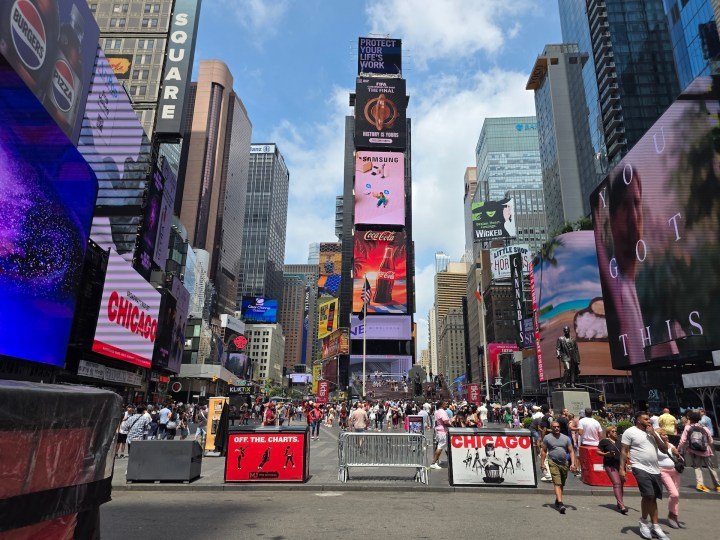


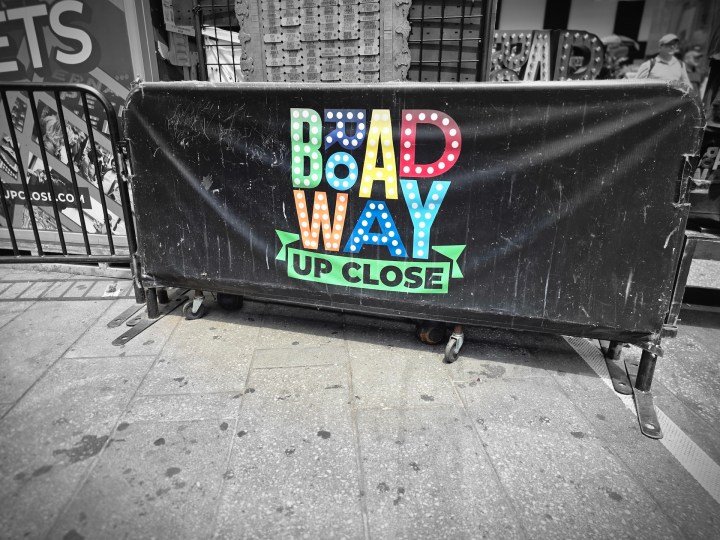
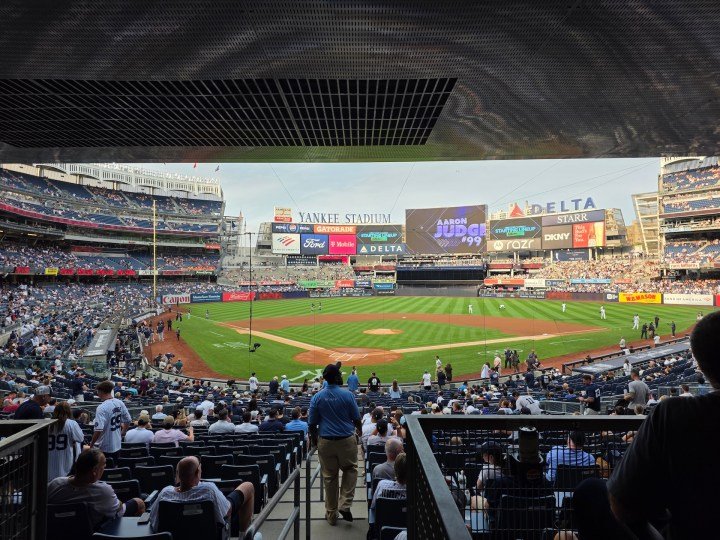
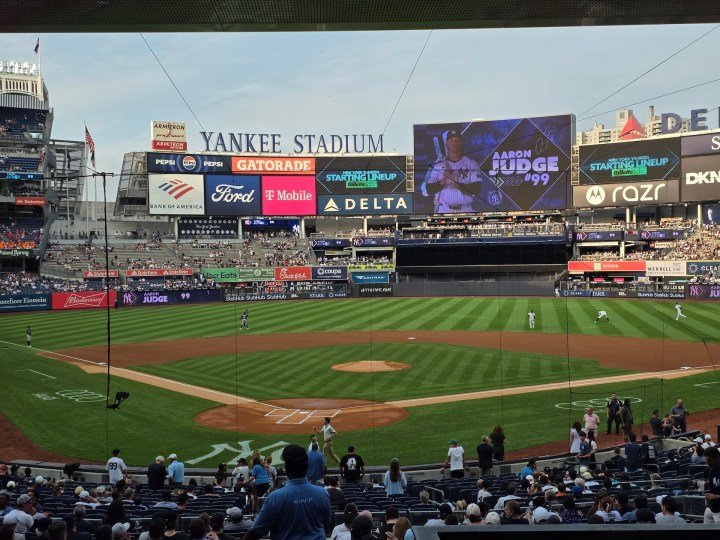
Like the Galaxy S25 Edge, this is a great main camera that delivers good photos in most lighting conditions. However, just like the S25 Edge, the Galaxy Z Fold 7’s camera struggles when you start to zoom. Here, the Galaxy Z Fold 7 proves to be a step above the S25 Edge, but still a considerable step below the flagship Galaxy S25 Ultra. This is to be expected, just based on the makeup of the camera array.
The 200MP main camera utilizes pixel binning to capture 12MP photos by default, but you can also choose to shoot in either 50MP or 200MP modes. As you switch between these, the image quality degrades, and fewer zoom options are available, so you’ll most likely want to stick to the default settings.
The ultra-wide camera features the same 12MP camera found on many other Samsung phones, including the S25 Edge, and it shares the same characteristics. The pictures are vibrant and slightly oversaturated, but they are ideal for posting directly on social media.
The key difference from the Galaxy S25 Edge is the 10MP telephoto lens, which offers 3x optical zoom. It’s the same as the one in the Galaxy Z Fold 6, and while I would have liked to see improvements here to match the telephoto on the Find N5, it’s good enough at 3x zoom for most users.


Therein lies the ideal way to summarize the Galaxy Z Fold 7 camera. It doesn’t feature the best smartphone camera on a foldable, but it’s good enough for most people. The 200MP main sensor is a great upgrade over the 50MP sensor used last year, and it’s a welcome upgrade even though the camera system isn’t everything I was hoping for.
Score: 8/10
Galaxy Z Fold 7 software: more refined than ever
Quick take: Optimization and Curation at its finest
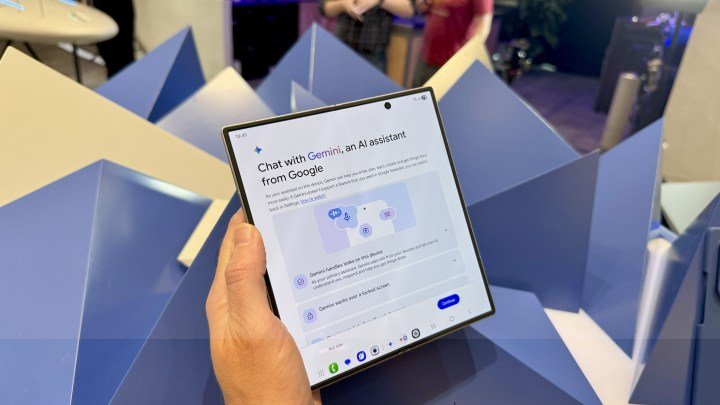
The Galaxy Z Fold 7 comes with One UI 8 on top of Android 16 out of the box, providing an incredibly polished experience. The seventh generation of the Galaxy Fold is the most polished yet, both in terms of software and hardware.
Like every Samsung flagship, this also comes with seven Android OS updates and seven years of security updates. The former means it’ll be supported up to Android 23, and the latter means you’ll get considerable longevity for your money. Samsung is fairly fast at updates as well, and this is one of the best overall offerings amongst folding phones. The company has also committed to keeping preloaded Galaxy AI features free in the future, although it’s unclear whether this also applies to the Google Gemini features.
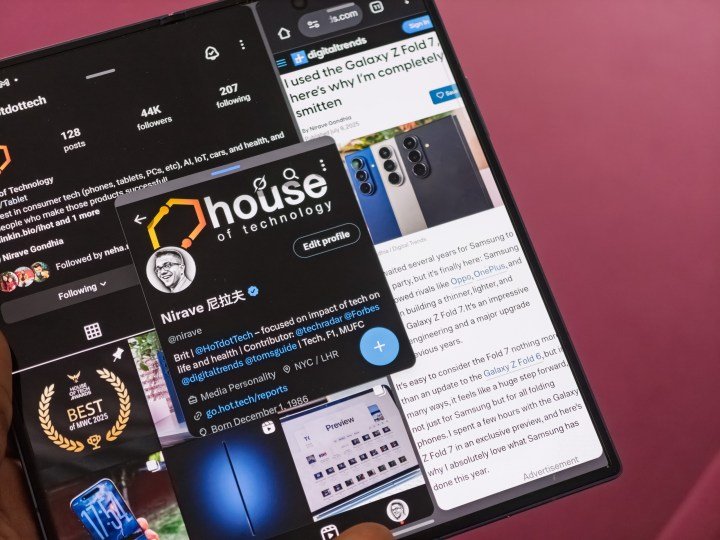
Samsung has been leading the way in multitasking on all smartphones for over a decade, and Multi Windows works extremely well on the Galaxy Z Fold 7. The core OS also comes with a new multi-window mode that allows you to run two big app windows side by side, but it’s disappointing that it’s just a lite version of Open Canvas, which is offered on the OnePlus Open and Oppo Find N5.
Then there’s AI, and the Galaxy Z Fold 7 has a host of features powered by Galaxy AI and/or Google Gemini. It’s a clever mix of AI use cases, but it still mostly focuses on generative features. One great reason to buy the Galaxy Z Fold 7 is the speed with which new features are rolled out, and Samsung has proven to be a launch partner for many new Gemini AI features.
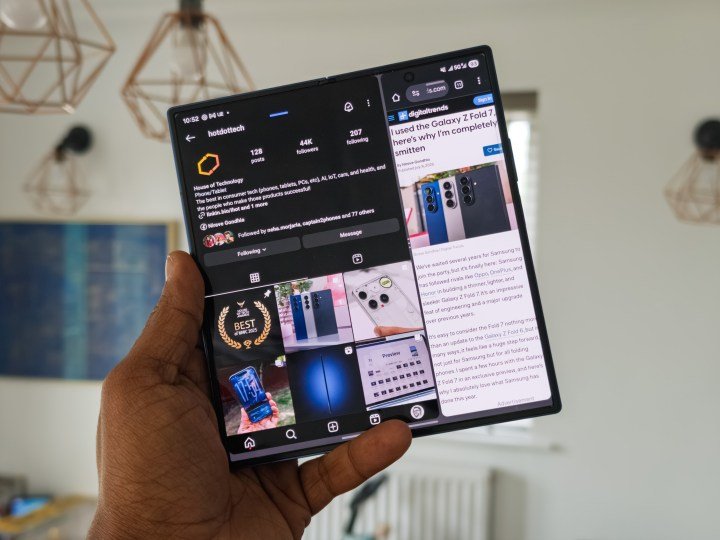
New for the Galaxy Z Fold 7 and One UI 8 are specific optimizations for the large screen. Tap and hold the side button to launch Gemini, and you can quickly share your screen or your camera with Gemini Live. This works extremely well and remains one of the best use cases for AI on a smartphone.
Specifically for the big screen, optimizations are available to help you utilize AI throughout the phone. Gemini AI results can be rearranged around the big screen to fit into your workflow. Content generated can be dragged between different apps, just like you can with regular images and other text. Then there’s Circle-to-Search, and you can now use it as an AI trainer during gameplay, including a personalized strategy guide that’s available within an app. These aren’t features that I particularly need, but it’s great to see that Samsung and Google are serious about optimizing for the large screen form factor.
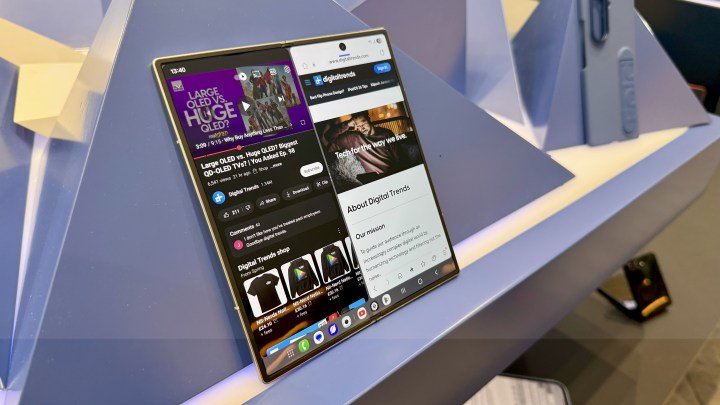
However, there’s one key area where the Galaxy Z Fold 7 falls short: the S Pen. More specifically, the lack of it.
I’m one of the many people who rarely use the S-Pen, so I didn’t expect to miss it. Then, I had to sign a PDF on the go with a service I had never used before, and it needed to be a close match to my physical ID. Yes, it’s still possible to sign with your finger on the larger main screen, but it takes much longer than with the S-Pen.
It was probably necessary to remove the digitizer layer under the display to accommodate the thickness, but this one moment has stuck in my mind. As the adage goes, you only appreciate something when it’s missing. I’d still much rather have the current design, but I miss the S-Pen slightly more than I expected to.
Score: 9/10
Galaxy Z Fold 7 price, deals, and availability
Quick take: A slight price hike, but lots of deals to soften the blow.
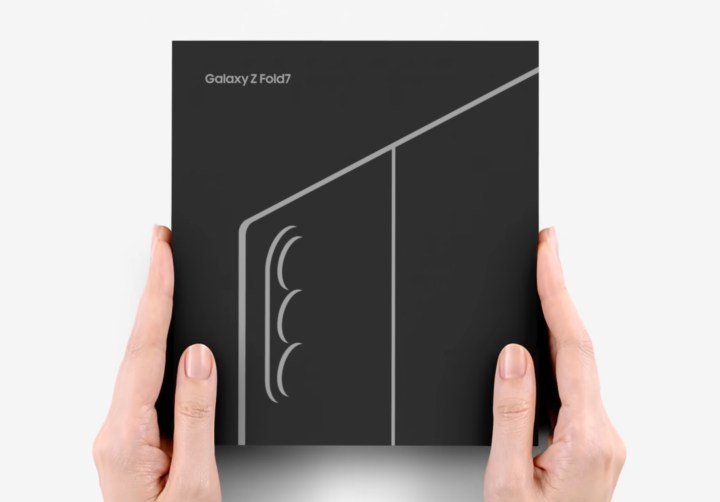
The Galaxy Z Fold 7 costs $ 2,000, making it one of the most expensive folding phones available for purchase. However, it’s only a $100 increase over the Galaxy Z Fold 6 — despite offering considerably more — and it’s $200 cheaper than the USD equivalent price of the Oppo Find N5. It’s available for pre-order and will go on sale on July 25.
Few people are likely to pay that full price, however. As every year, Samsung offers a variety of pre-order deals, including exclusive credit towards accessories, discounts on the Galaxy Buds Pro 3 and Galaxy Watch 8, and up to a $1,000 trade-in credit. It’s also where you can find the exclusive Mint color, and you’ll get double or discounted extra storage. If you’re interested in purchasing the Galaxy Z Fold 7 outright, you can visit Samsung or Best Buy, which can also assist you with carrier-financed purchases.
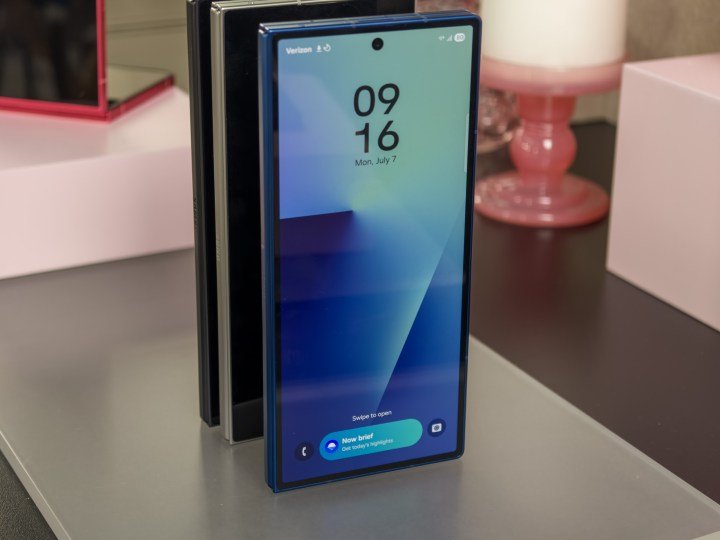
Talking of carriers, there’s a range of great deals as well. AT&T is offering up to $1,100 off with a trade-in of any Galaxy S, Note, or Z series phone. This also stacks with separate promotions offering a Galaxy Tab and/or Galaxy Watch for just $0.99/m, but neither is likely to be the latest models.
Verizon also offers a range of similar deals, including $1,100 off with a trade-in and a specific carrier plan. If you choose to buy the Galaxy Z Fold 7, you can also get a Flip 7 for free (although with an additional line), and/or the Galaxy Watch 8 for $0 per month, provided both are purchased with an additional line on Verizon.
Should you buy the Galaxy Z Fold 7?
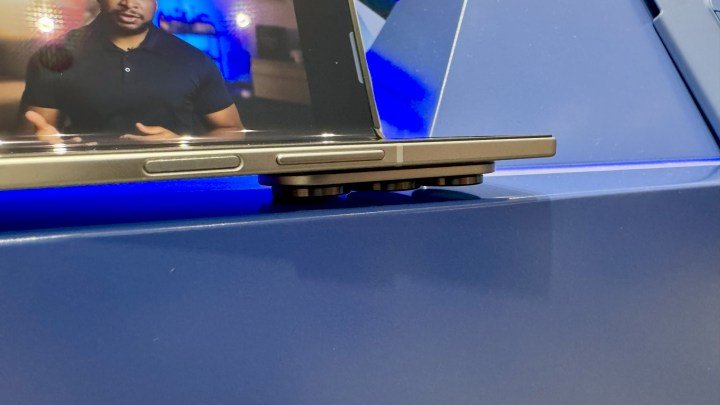
Unequivocally, the answer is yes; you should buy the Galaxy Z Fold 7. It’s the first folding phone that can persuade people globally to try a folding phone, and this is a landmark folding phone that sets the benchmark for others to follow.
It also proves that phones don’t always need the best specs, although I hope that Samsung does improve these compromises in the future. The battery could be better; the performance is solid, but unspectacular, and the cameras are a half-step up, not a full step ahead. Yet, it’s one of the few devices I’d recommend even if you own the Galaxy Z Fold 6.
If these are not dealbreakers for you, the Galaxy Z Fold 7 is the folding phone to buy. This is the next generation of folding phones, and crucially, the Galaxy Z Fold 7 will be available worldwide, unlike its competitors. The only real question is which Galaxy Z Fold 7 color you should buy.
Why not try…?
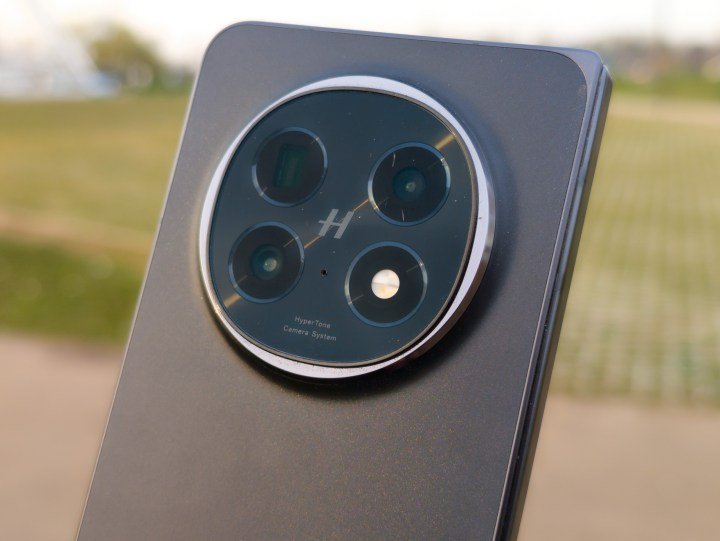
If you’re looking for a folding phone with improved battery life and a better camera, then the OnePlus Open is worth considering. Although it’s two years old — and its successor, the Find N5, is only available in Asia — it’s still one of the best folding phones you can buy in the US. The triple camera offers significantly better zoom, the battery is larger with faster charging, and it features the Open Canvas multitasking software, which inspired one of the core Android multitasking features.
Then there’s the Pixel 9 Pro Fold, which is almost a year old. Google is set to launch its replacement, the Pixel 10 Pro Fold, next month, but the Pixel 9 Pro Fold is still a great alternative to the Galaxy Z Fold 7. It features a similar camera setup, but the battery is larger, and the Tensor G4 processor has been considerably improved over previous years, even though the Snapdragon 8 Elite is an improvement.
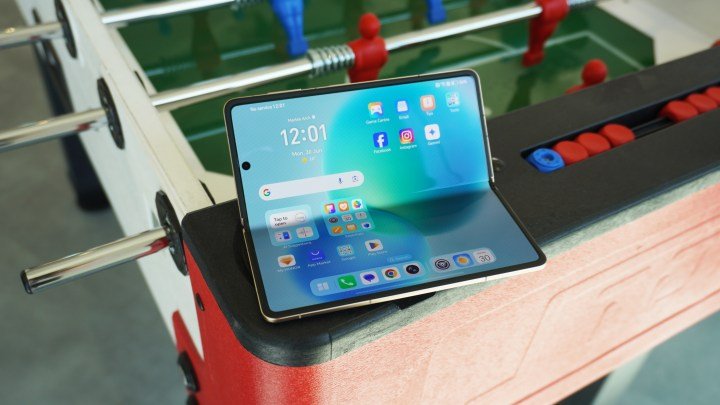
Then there’s the Oppo Find N5 and the Honor Magic V5, both of which are only available in Asia. The latter is expected to launch in some global markets in the coming months, but it won’t be sold in the US. These are both excellent folding phones, but would require foregoing warranty and support in favor of importing them from abroad. Neither is likely to support all the necessary network bands for your carrier, either.
For these reasons, the Galaxy Z Fold 7 is undoubtedly the book-style folding phone that most people should buy.
How we tested
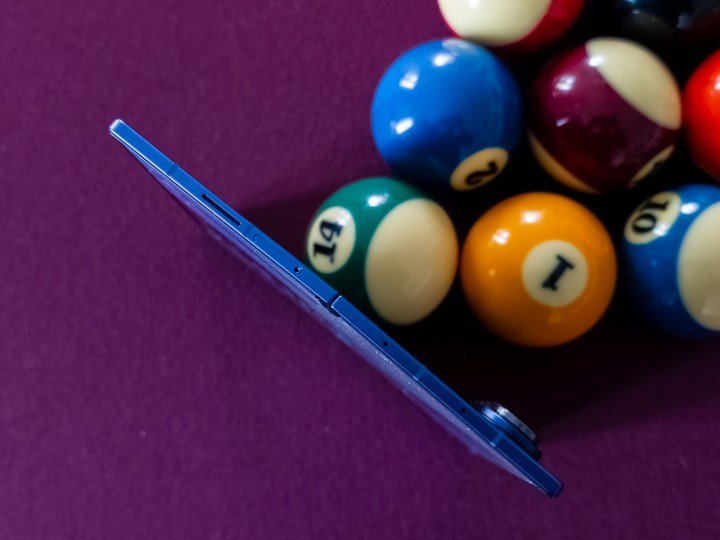
I used the Galaxy Z Fold 7 as my primary phone for eight days, including the first day and the day of publication. I’ve used it with dual SIMs — one physical, and one eSIM — and running the latest software.
I’ve reviewed Samsung phones for almost twenty years, including nearly every folding phone released globally to date. Testing includes a mix of usage, with some days featuring heavy camera testing and other days with low to moderate usage across both the main and front screens.
Some observations were then verified through benchmarks, including Geekbench and 3DMark, to quantify and compare these results.











































